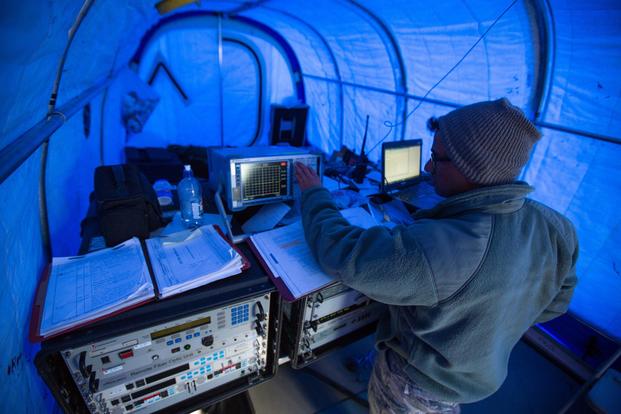In freezing and almost unbearable living conditions on the world's southernmost continent, four airmen had one mission in December: Create an expanded communications network.
As part of Operation Deep Freeze, an ongoing joint U.S. military mission for more than 60 years in Antarctica, members of the Air National Guard's 263rd Combat Communications Squadron conducted a two-week experiment by installing and testing various combat communications capabilities and tapping into satellite networks, according to a recent Air Force release.
"Essentially, this was a proof of concept to determine if combat communicators can provide local, temporary services to increase the network data rate via our tactical satellite terminals," said Master Sgt. Chris Farnsworth, a communications technician with the 263rd Combat Communications Squadron, a detachment of the North Carolina Air National Guard's 145th Airlift Wing.
Along with Farnsworth, the airmen involved were Staff Sgts. Kristofer Vandermark, Titus Poulose and Michael Jennings.
"Our role was to deploy a four-man team to install and validate isolated SATCOM capabilities at Williams Field while simultaneously developing processes for continued mission support through 2021," Farnsworth said in the release.
Williams Field is part of McMurdo Station, the central hub of operations in Antarctica. It also supports another mission, the National Science Foundation's Polar Program research effort, which calls for military and international partners to travel annually to the South Pole.
The U.S. considers its mission to support the scientific research arm as non-mil-to-mil training, under the 1961 Antarctic Treaty System.
On any given day, "it's minus 30 degrees and you're standing and landing on ice that is two-and-a-half-miles thick," Lt. Col. David Panzera, director of the 109th Airlift Wing's program integration office, said in a 2016 interview with Military.com.
At that time, he said McMurdo can grow to 1,000 station personnel between October and February each year.
The airmen worked to go beyond current, limited communications, Farnsworth said. Whether they were successful was not disclosed.
But they're not alone in their efforts. It has been reported that both Russia and China have ramped up their presence on the continent.
For example, China has been active inside the Australian Antarctic Territory, northeast of McMurdo.
According to a report from The Australian newspaper, the Chinese too have begun experimenting with improvised communication networks.
"By 2020, the U.S. may well have lost its technological advantage in GPS over strategic rivals Russia and China, who have been developing their own satellite navigation systems -- GLONASS and BeiDou," according to Anne-Marie Sharon Brady, a New Zealand politics academic who specializes in Chinese politics.
Additional satellite and receiver stations on the continent could help players such as Russia and China expand their defensive and offensive military operations around the globe, Brady told The Australian in September.
The Antarctic Treaty System bans militarization and weapons use on the continent but allows for military personnel and equipment to flow into the region.
-- Oriana Pawlyk can be reached at oriana.pawlyk@military.com. Follow her on Twitter at @Oriana0214.












